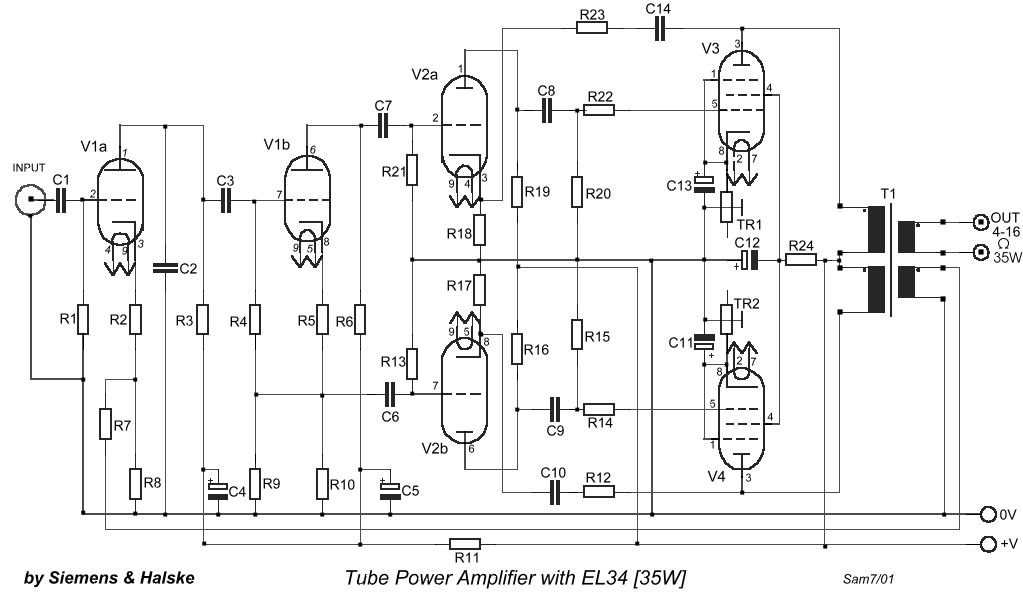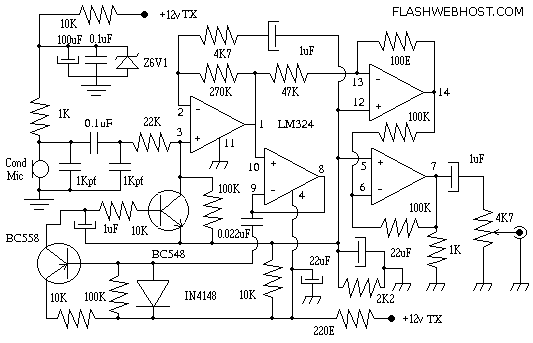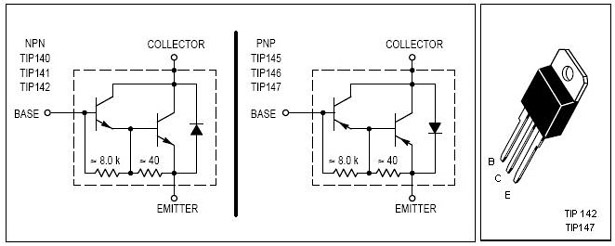
Instrumentation Amplifier

In a single difference amplifier configuration, the AM-427 demonstrates excellent common-mode rejection and low noise voltage, which is primarily influenced by the resistor Johnson noise. The three-amplifier configuration presented circumvents the low input-impedance characteristics typical of difference amplifiers. Due to the inclusion of additional amplifiers, the spectral noise voltage increases from a typical value of 3 nV/√Hz to approximately 4.9 nV/√Hz. The overall gain of the circuit is set to 1000; with balanced source resistors, a common-mode rejection ratio (CMRR) of 100 dB is achieved.
The AM-427 device operates as a precision amplifier in applications requiring high common-mode rejection. The single difference amplifier configuration is particularly effective in rejecting noise that is common to both inputs, enhancing the signal integrity in noisy environments. The design employs three amplifiers to boost performance while addressing the input impedance limitations that can affect signal fidelity.
In this configuration, the gain is meticulously set to 1000, ensuring that the output signal is significantly amplified without sacrificing quality. The use of balanced source resistors is critical in maintaining the desired CMRR of 100 dB, which indicates the amplifier's ability to reject common-mode signals effectively while amplifying the differential input.
The increase in spectral noise voltage from 3 nV/√Hz to approximately 4.9 nV/√Hz, although a trade-off due to the additional amplifiers, remains within acceptable limits for high-precision applications. This level of noise performance is particularly beneficial in sensitive measurement systems where low-level signals are processed.
In summary, the AM-427's three-amplifier configuration represents a sophisticated approach to achieving high gain and excellent common-mode rejection, making it suitable for a wide range of precision electronic applications. The careful balancing of components and configuration allows for effective noise management while ensuring robust performance. In a single difference amplifier configuration, the AM-427 exhibits excellent common-mode rejection and spot nois e voltage so low it is dominated by the resistor Johnson noise. The three-amplifier configuration shown avoids the low input-impedance characteristics of difference amplifiers. Because of the additional amplifiers used, the spectral noise voltage will increase from a typical of 3 nV/Hz to approximately 4.9 nV/Hz.
The overall gain of the circuit is set at 1 000; with balanced source resistors, a CMRR of 100 dB is achieved.
The AM-427 device operates as a precision amplifier in applications requiring high common-mode rejection. The single difference amplifier configuration is particularly effective in rejecting noise that is common to both inputs, enhancing the signal integrity in noisy environments. The design employs three amplifiers to boost performance while addressing the input impedance limitations that can affect signal fidelity.
In this configuration, the gain is meticulously set to 1000, ensuring that the output signal is significantly amplified without sacrificing quality. The use of balanced source resistors is critical in maintaining the desired CMRR of 100 dB, which indicates the amplifier's ability to reject common-mode signals effectively while amplifying the differential input.
The increase in spectral noise voltage from 3 nV/√Hz to approximately 4.9 nV/√Hz, although a trade-off due to the additional amplifiers, remains within acceptable limits for high-precision applications. This level of noise performance is particularly beneficial in sensitive measurement systems where low-level signals are processed.
In summary, the AM-427's three-amplifier configuration represents a sophisticated approach to achieving high gain and excellent common-mode rejection, making it suitable for a wide range of precision electronic applications. The careful balancing of components and configuration allows for effective noise management while ensuring robust performance. In a single difference amplifier configuration, the AM-427 exhibits excellent common-mode rejection and spot nois e voltage so low it is dominated by the resistor Johnson noise. The three-amplifier configuration shown avoids the low input-impedance characteristics of difference amplifiers. Because of the additional amplifiers used, the spectral noise voltage will increase from a typical of 3 nV/Hz to approximately 4.9 nV/Hz.
The overall gain of the circuit is set at 1 000; with balanced source resistors, a CMRR of 100 dB is achieved.





